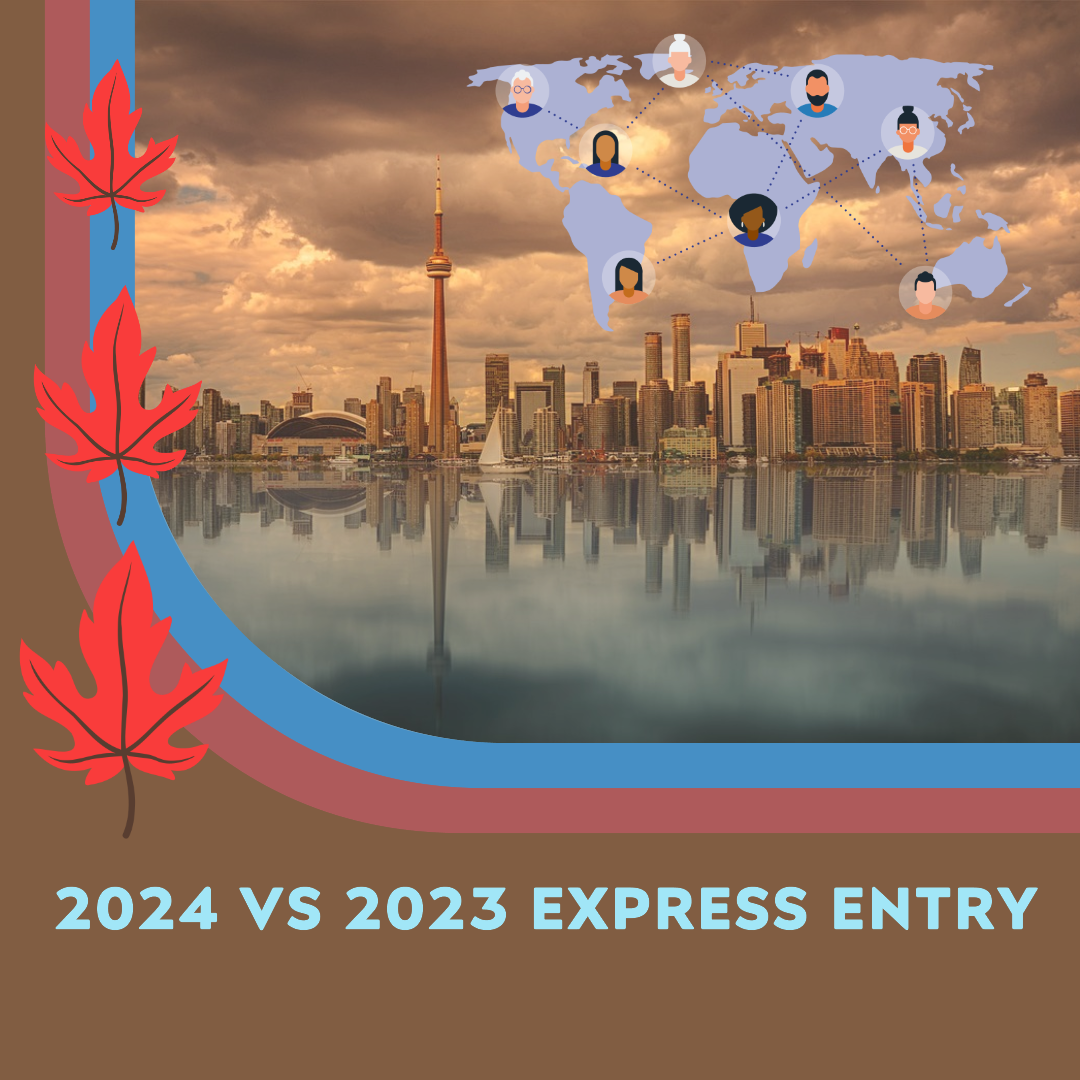
As an Indian national with my sights set on Canadian immigration, keeping up with the ever-evolving Express Entry system is crucial. The first half of 2024 has seen significant changes compared to the same period in 2023, and these developments can offer valuable insights into what we might expect for the rest of the year.
Express Entry 2024: More Draws, Fewer Invitations
One surprising trend is the increase in the number of draws held in 2024 (19 vs. 13 in 2023). However, these draws have yielded fewer invitations to apply (ITAs) – 41,855 in 2024 compared to 49,948 in 2023. This seems counterintuitive, but the answer lies in the introduction of category-based draws.
Category-Based Draws: A Game Changer
A significant development in 2024 is the introduction of category-based draws. These draws target specific professions like healthcare, STEM (Science, Technology, Engineering, and Math), or agriculture, inviting candidates with relevant skills and experience to apply for permanent residence (PR) even if their CRS score isn’t the highest. This shift reflects Canada’s growing need for skilled workers in these sectors.
Impact on General Draws
The introduction of category-based draws has undoubtedly impacted traditional “general” draws, which encompass the Federal Skilled Worker Program (FSWP), Canadian Experience Class (CEC), and Federal Skilled Trades Program (FSTP). While the frequency of general draws has remained relatively steady (9 in 2024 vs. 8 in 2023), the average draw size and cut-off scores have changed dramatically.
Smaller Draws, Higher Scores
The average general draw size in 2024 has shrunk significantly, issuing only 1,605 ITAs compared to 5,475 in 2023. This reduction reflects the focus on category-based draws, with fewer spots available in general pools. Additionally, the average CRS cut-off score for general draws in 2024 has climbed to a whopping 536, a significant increase from the 2023 average of 489.
Looking Ahead: What Can We Expect?
With 7,000 fewer ITAs issued in the first half of 2024 compared to 2023, and a higher immigration target set by IRCC (110,770 for 2024 compared to 82,800 for 2023), the question remains: how will IRCC meet its goals?
Possible Scenarios for the Rest of 2024
There are two main possibilities. First, IRCC may increase the frequency of general draws or increase the size of existing draws to compensate for the lower number of ITAs issued so far. Second, category-based draws may become more prominent, focusing on attracting skilled professionals in specific sectors to fill critical labor shortages.
Uncertainty Remains
While the data suggests a potential increase in draw frequency or size, predicting the exact course of Express Entry in the remaining months of 2024 is difficult. However, one thing is certain: skilled professionals with strong CRS scores and relevant experience in high-demand fields will likely have an advantage.
Tips for Aspiring Canadian Immigrants
Here are some takeaways for those aiming to immigrate to Canada via Express Entry:
- Build a Strong CRS Score: Focus on factors that contribute to your CRS score, such as work experience, education, language skills, and age.
- Highlight Relevant Skills and Experience: Craft your Express Entry profile to showcase your skills and experience in high-demand professions, particularly those targeted by category-based draws.
- Stay Updated: Keep yourself informed on the latest developments in the Express Entry system. Reliable immigration consultants and official IRCC channels are valuable resources.
By staying informed, building a strong profile, and targeting your skills towards in-demand sectors, you can increase your chances of success in Canada’s Express Entry system, regardless of the specific changes that unfold in the remaining months of 2024.
